Are you building a house in Philippines? See sample house plans and contact me to design new house for you!
The Philippines is a beautiful country until we talk about living conditions and government. One of the poorest countries in the world, ruled by one of the most corrupted governments in the world. Corruption and geography isolation keep foreign investment away, good paying jobs are hard to be found, so about 10% of country population is working overseas, and build beautiful houses when they return home.
Philippines have one of the highest income inequality of the world. They built an impressive business district in Makati City (above photo) and Fort Bonifacio Global City in Taguig, while half of population lives in poverty (less than $1.25 per day).
Population and housing statistics
Philippines population has grown from 27 million people at 1960 census to 60 million people at 1990 census.
2000: household population 76,332,470, number of households 15,275,046, average household size 5.0
2010: household population 92,097,715, number of households 20,171,899, average household size 4.6
2015: household population 100,573,715, number of households 22,975,630, average household size 4.4
Source: psa.gov.ph
Additionally, at least 12 millions filipinos are working overseas, according Wikipedia.
If in the past USA was preferred work destination, since 2000s most overseas workers went to Middle East, but you can find filipinos on every continent. I can tell this from my personal experience of architectural designer. I have been contacted by people from all over the world telling me that build houses in Philippines, and this even before writing this article. Actually half of my customers in Philippines contacted me from an IP located in another country.
I believe that the booming economy, lack of public housing programmes and too few large-scale private housing developments, made people to build houses themselves, browsing the internet for floor plans, find my international website and contact me for custom house design.
While many people from Philippines choose to emigrate or work overseas, Philippines is also a destination for foreign expats looking for a cheaper place to live. Many Americans are living in Philippines, I personally don’t understand (maybe someone can explain me?) why people from such developed country would move to a third world country where living conditions, education and health system are much worse and crime ratio is high. YouTube is full of videos about moving or against moving to Philippines. If you want to have same living conditions you had in United States, a big house, a car, have kids in private school, etc, the cost of living is not much cheaper than in United States.
(personally I considered Philippines a better country than it actually is, until local people who contacted me for house projects, also informed me about bad living conditions)
General review of housing
Philippines have beautiful architecture, there are a lot of beautiful, over-decorated houses, but this architecture style mask the fact that Philippines houses are among smallest in the world.
Filipinos are also one of the shortest people in the world, but I still see their homes ridiculously small. Bedroom around 6-7 sqm, making 3 bedroom houses to be about 50 sqm, size comparable with Hong Kong apartments despite of much larger country. Worse than this, most apartments are studios or 1 bedroom, compared with Hong Kong which is dominated by 2-3 bedrooms. In subdivisions built by major real estate developers, houses are usually 2-3 bedrooms.
If this was not worse enough, there are many people living in informal settlers (aka slums, squatters), of the rest who have legal land titles, many built houses that still looks like slums. In downtown Manila every unused piece of land get occupied by informal settlers, river beds are also heavily built, people living above highly polluted water and in danger of flooding. Even the 8-meter wide land between railways and nearby streets is the home for numerous poor families (cannot imagine how you can sleep as the trains horn continuously).
There are too many informal settlers for the government to take care about them. Government is trying to clear the slums from Philippines National Railway land and from danger areas such as river beds, and move them into socialized housing built at city outskirts, but people do not want to live there and move back to slums, which are conveniently located near workplace and amenities.
This is Forbes Park subdivision in Makati (average home price 5 million USD)…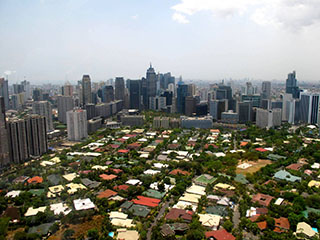
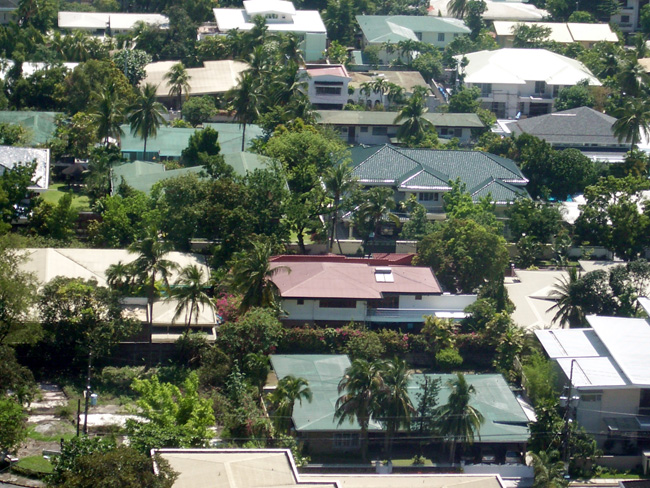
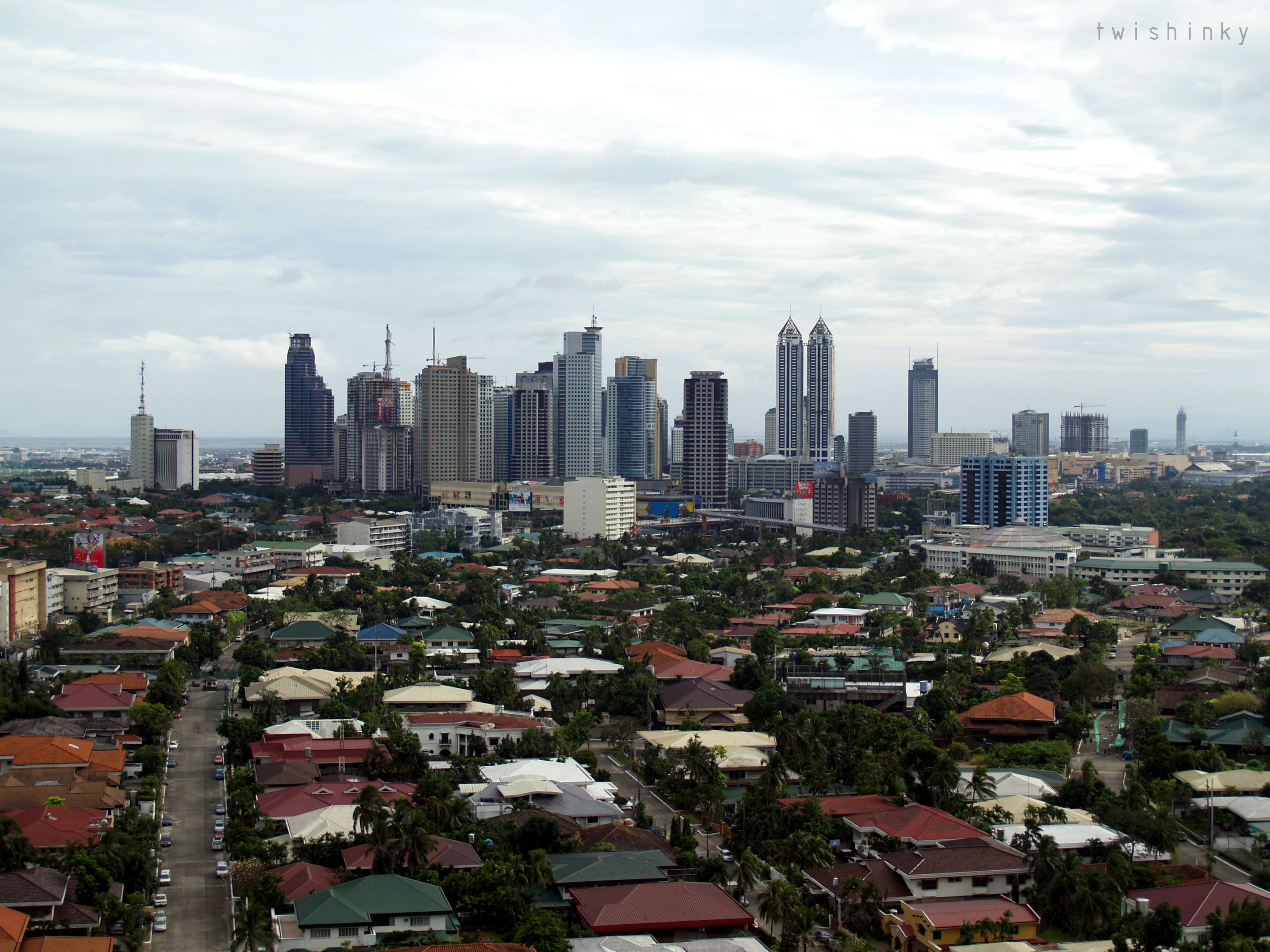
…and the typical Philippines houses from Metro Manila near Makati!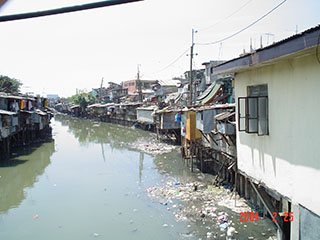
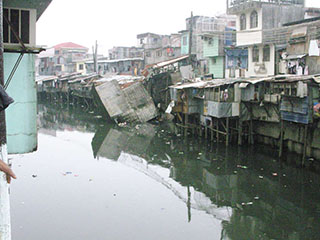
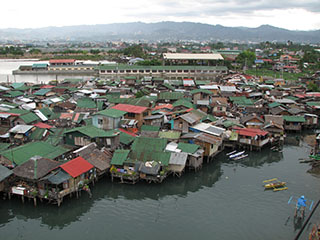
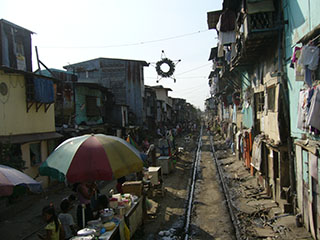
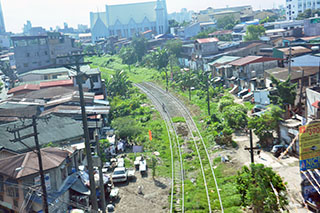
“Happyland“, weird name for the biggest slum in Manila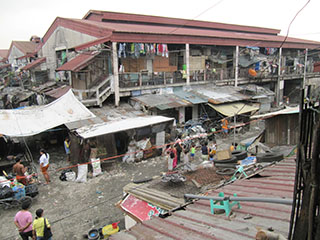

New housing estates (called subdivisions) are being built by private developers at city outskirts, less-dense developments, large open spaces, gated communities with guards, clubhouse and swimming pool.
The fastest developing cities are Dasmariñas, Bacoor and Inus (30 km south from downtown Manila, within Cavite province), here are the most subdivisions and most beautiful architecture, less slums and more wealthy people.
Modern housing developments in Cavite, Angeles and Mactan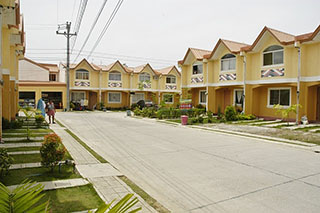
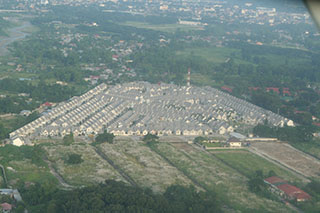
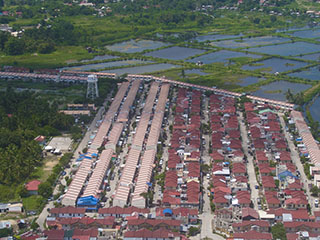
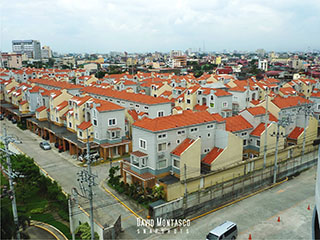
Beautiful houses from Eastwood Greenview subdivision – Slums of the poor built on Philippines National Railway
Government does NOT provide statistics regarding house sizes, my personal estimation is that average size are around 30-50 sqm in legally-built developments, but a significant amount of population lives in slums which their house size cannot be defined, some slums having just a small enclosed area for sleeping, people spend whole day outdoor. Is common to see families of 10 people sleeping in a 5 sqm space.
While population was rising, cities did not expanded much horizontally but rather became denser and denser, in Metro Manila lots are over-subdivided by successive family generations and nowadays there are entire families squishing on lots small as 20 sqm.
What I do not understand yet, is why in smaller cities and countryside, where the land is cheap, people own large plots but still build extremely small houses. Living in tight spaces is part of Philippines culture?
Philippines housing types
Subdivisions (aka Housing Complexes in other countries) became more common after year 2000. Rowhouses on plots small as 3.5 meters wide and 10 meters deep, with 24 meters between street axes, reaching densities of about 200 housing units per hectare, probably the densest housing development in the world (example: Ximena Mabalacat – floor plan).
Single detached = house surrounded by courtyard on all 4 sides, houses built at minimum 3 meters apart (1.5m setback for both houses).
Single attached = a definition that do not exists in any other country, with 1 or 2 firewalls (walls built at 0-lot boundary), built with same orientation so everyone is having windows facing to neighbor’s blank wall at 1.5m apart, giving the advantage of detached houses without shared walls. Sometimes the carport roof is attaching houses. They are VERY UGLY because on one side the roof is overhanging 700mm and on other side there is a blank wall that extend above roof.
Duplex = semi-detached, 2 houses symmetrical.
Rowhouse = synonym with british Terraced house or american Townhouse.
Bungalow = single-storey house, similar with American meaning. Unlike the rest of Asia where bungalow means a detached house regardless of number of floors.
Nipa hut = Philippines traditional houses found in rural areas, made by bamboo and other wood, they are so light that if you want to move somewhere else you can ask few villagers to carry your house on their shoulders, as seen in the below video, a practice called bayanihan. I do not understand the reason of moving since this type of move is limited by people’s walking distance.
Most common housing typologies in these subdivisions:
40 sqm 3-bedroom back-to-back terraces on 5×8 m land (example: Cedar Residences – floor plan – I wonder how you can reach house door after parking, carport is 2.5 m wide and an average car 1.8 m wide will block the door).
50 sqm 2-bedroom terraces on 4×10 m land, (example Portville Mactan).
The subdivisions offer also bigger houses with 3 and 4 bedrooms but very few of them are over 100 sqm.
As 2014, prices of the 2-bedroom 40-50 sqm terraced bare houses vary from about 1 million PHP (22,000 USD) in Cavite to 3 million PHP in Metro Manila. 3-4 bedroom 100 sqm detached finished houses are 3 million to 10 million PHP.
Housing design regulations
In urban areas (non-subdivisions), according my study from satellite photos, most lots are within 4-10m wide and 10-16m long. Most plots vary from 40 sqm (minimum by law) to 120 sqm, very few lots are more than 120 sqm of land in urban areas. 80-120 sqm looks being average lot size. However, some people asked my help to design house plans for lots small as 20 sqm.
Philippines building code regulate habitable rooms at minimum 6 sqm and 2 meters wide, most houses are built at these minimum values, but corruption in real estate allow developers to build even smaller rooms, examples: Pioneer Woodlands bedrooms are less than 2m wide, Angeles, floorplan 25.5 sqm 2-bedroom home, bedrooms should be 1.9 x 2.4m internally.
For comparison, a nearby country Malaysia building code says 6.5 sqm bedroom and 9.3 sqm master bedroom, but these minimal sizes are rarely seen and only in public housing. I never seen any developer in Malaysia building anywhere closer to minimum requirements, they build usually 10-15 sqm common bedrooms and 15-25 sqm master bedroom.
House setback are 1.5m in front and sides, and 2m at rear. I never found a clear regulation about carport roofs and balconies within setbacks.
Ceiling height should be minimum 2.4 m, and 2.7 m for first floor, but in most houses, all floors are 2.4 m.
Bad house design: as seen in floor plans provided by developers, living room is so small that you cannot place a sofa, TV and dining table in same time, or dining chairs once pushed out, block the way between kitchen and bedrooms.
Kitchen stuff (sink, stove, fridge, cabinets) are together only 2 meters long. Some low-cost houses do not even have kitchen inside, sink being placed outdoor (so you are bitten by mosquito while washing dishes?).
Carports are often designed 2.5 meter wide, minimum by law, the floor plans illustrate cars but insufficient space to open car door (so how you can get out of car?), or the car is blocking the way to house main door. No wonder why we see many people parking on roadside. The idiot architects don’t know that 2.5 meter wide is OK only for open carparks, garages or any parking space between walls should be 3 meters minimum width, today cars average 1.8 m width and you need 90 cm space on driver side and 30 cm on other side.
I need feedback from local people. I understand that a large part of population is poor so low-cost housing is needed, but are these houses big enough for people needs? Or people will extend it over courtyard and destroy the urban landscape, like in Mexico?
Good website: www.pinoyrealty.com, few dozens house models, all with floor plans shown on site.
More stuff
Anyone who know or find resources about building code regulations across history please contact me!
According hlurb.gov.ph/wp-content/uploads/services/developer/rule1.pdf, the minimum lot areas and is rowhose 50 / 4m, duplex 80/attached sqm / 8 m, detached 100 sqm / 10/12 m (medium housing).
According hlurb.gov.ph/wp-content/uploads/services/developer/rule1n2.pdf, the minimum lot areas and frontages are: rowhouse 32 sqm / 4 m, duplex/attached 48 sqm / 6 m, detached 64 sqm / 8 m (economic / socialized housing).
According hlurb.gov.ph/wp-content/uploads/laws-issuances/board-resolutions/BR_824.pdf, the minimum lot areas and frontages are: rowhouse 36/28 sqm / 4/3.5m, duplex/attached 54/48 sqm / 6 m, detached 72/64 sqm / 8 m (economic / socialized housing).
Which is the truth??
http://grem.ph/realty-resources05.php specify different laws, setbacks 3 m at front, 2 m at back, 1 m at sides.
More strange examples found during my study
Possible smaller house: Wallnut Grove, 22 sqm 1-bedroom house, 4m wide and 5.5m deep (smallest house ever?). Neither living room or bedroom looks wider than 2 meters.
Gran Seville, 36 sqm single-floor 2-bedroom house measuring 6x6m
Greeensbolough Dasmarinas, 40 sqm 3-bedroom house
M Place, block with apartments from 16 sqm studio to 40 sqm 2-bedroom
Cambridge Village, Condo with 2-bedroom apartments small as 30 sqm.
The Stratford Residences, 68-storey condo dominated by studio and 1-bedroom apartments. 3-bedroom apartments are only few on top 8 floors.
Note that all these horrible tiny houses are examples of LEGAL buildings, designed by architects and build with permit from government. Imagine that the slums are even worse!
Can’t find an empty plot of land? No problem, build OVER ROAD!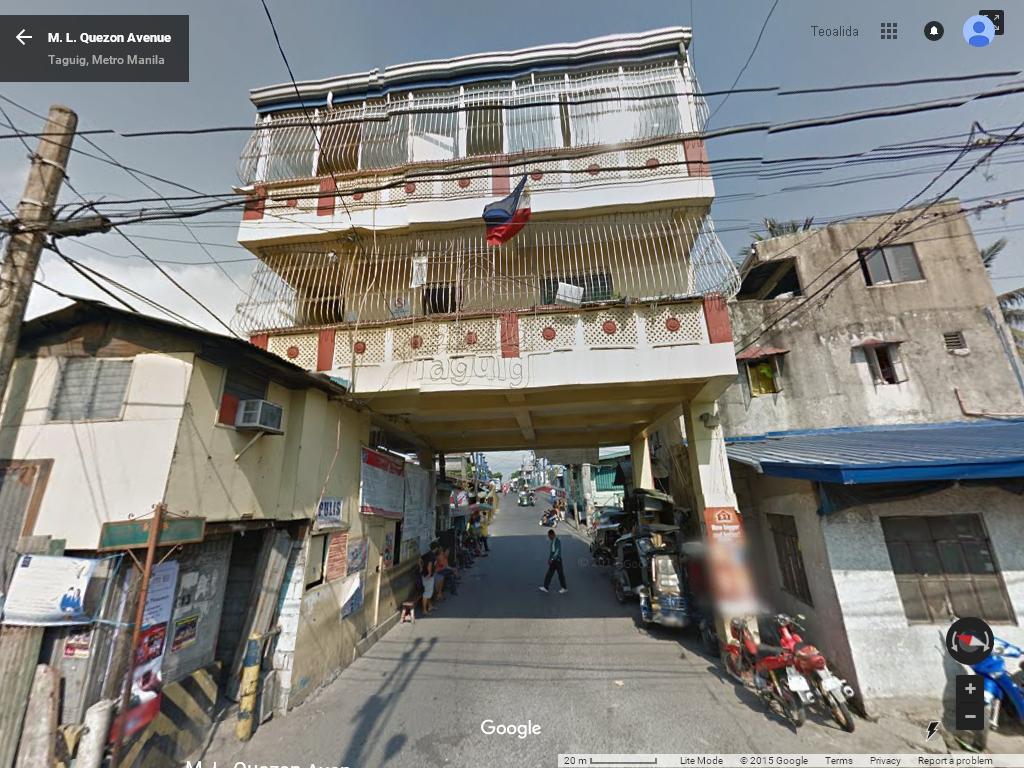
Transportation
Manila Light Rail / Metro Rail was the first metro system in South Asia, opened 1984 but development was slow and presently it have only 3 lines totaling 51 km.
There are also modern buses, but most common means of transportation is the Jeepney, originally US Military vehicles which (few hundreds vehicles) were sold to locals when troops retired at end of World War II, locals converted them in buses by extending their wheelbases and installing roofs, and over-decorated, calling them Jeepney. Nowadays most Jeepneys are made 100% locally, resembling the shape of American Jeep but made 6-7 meters long, others are based on second-hand Japanese SUV, vans and trucks, still called Jeepneys despite being unrelated with American Jeep). About 50.000 Jeepneys are driving around Manila (according BBC).
These vehicles are over-decorated with various texts, religious messages and other bullshit, but not with their route (so how people know to pick the right one!?). They follow chaotic routes and stop anywhere even in middle of road, putting passengers in danger. In rural areas is common to see Jeepneys overcrowded with people sitting on their roofs, despite that it is an illegal practice (example video).
Another form of transportation unique in Philippines are Owner Type Jeep, hand-made vehicles resembling the US Jeep but in miniature, less than 3 meters long, most lacking seatbelts, windshield wipers, or other features standard for western cars since 1960s. Does anyone know what engine they have?
Philippines also have tricycles, common also in other South Asian countries, made from bicycles and motorcycles with a bench attached supported by a 3rd wheel, and roof. Some are even used as taxis. When you see a car, it looks giant compared to traditional vehicles!

More charts with price index in Singapore, Thailand, Indonesia, Philippines on systemisbroken.blogspot.com
Page published for first time in 2012 and updated over next years with more information found by me or provided by visitors. Text written by me (Teoalida) and images taken from Wikipedia, Panoramio and other websites. Do you have useful information that worth adding? Did you found an error or have a contradictory opinion? Leave a comment!


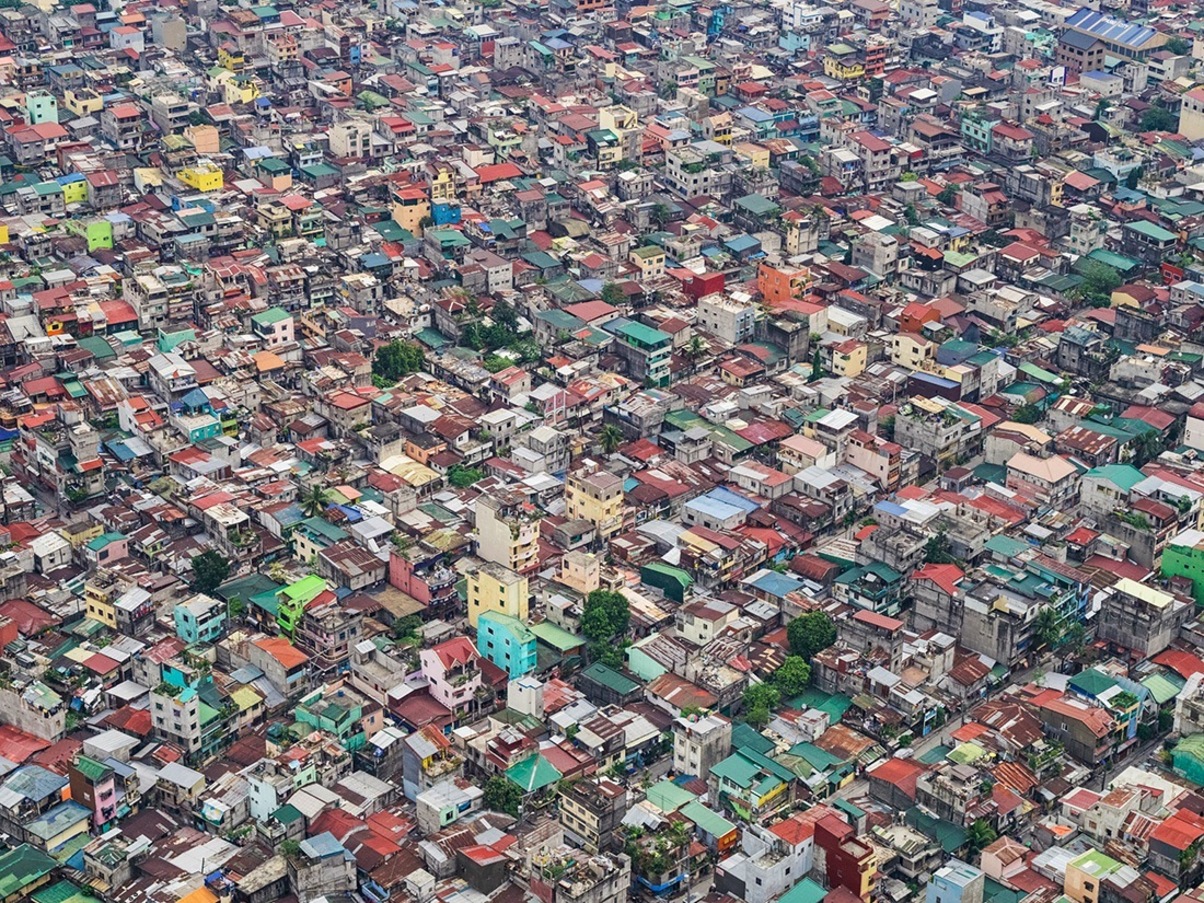

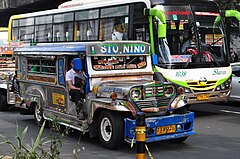
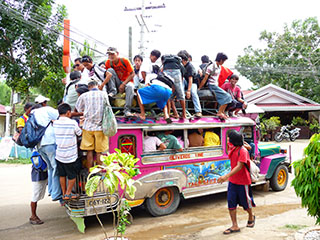
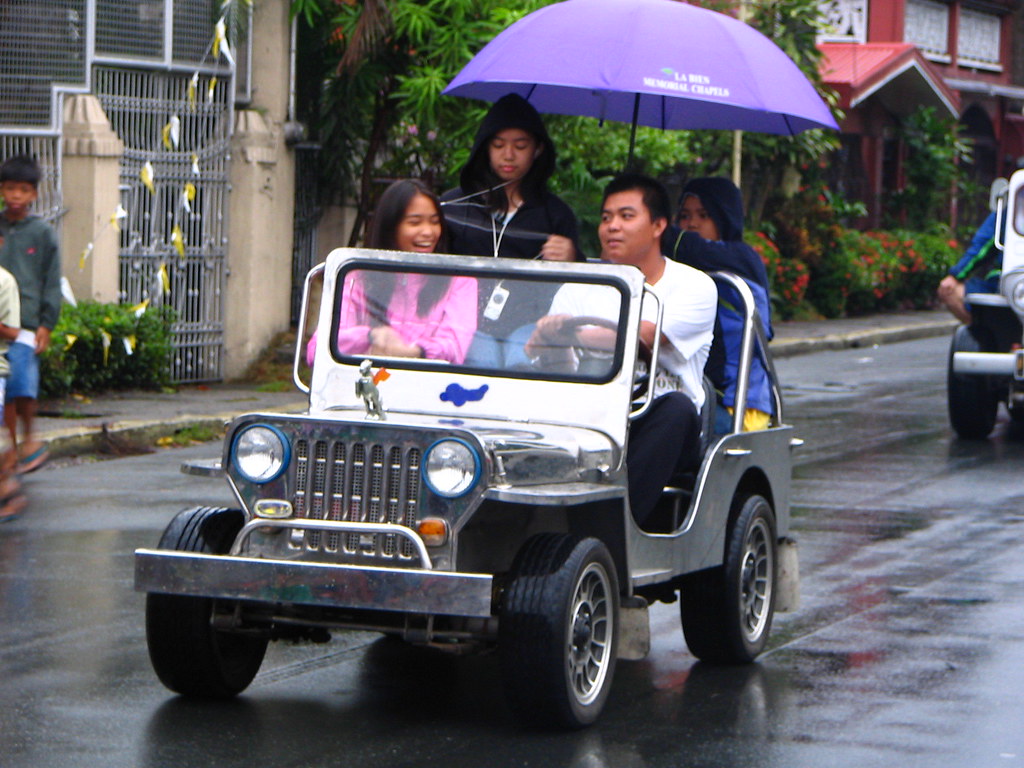
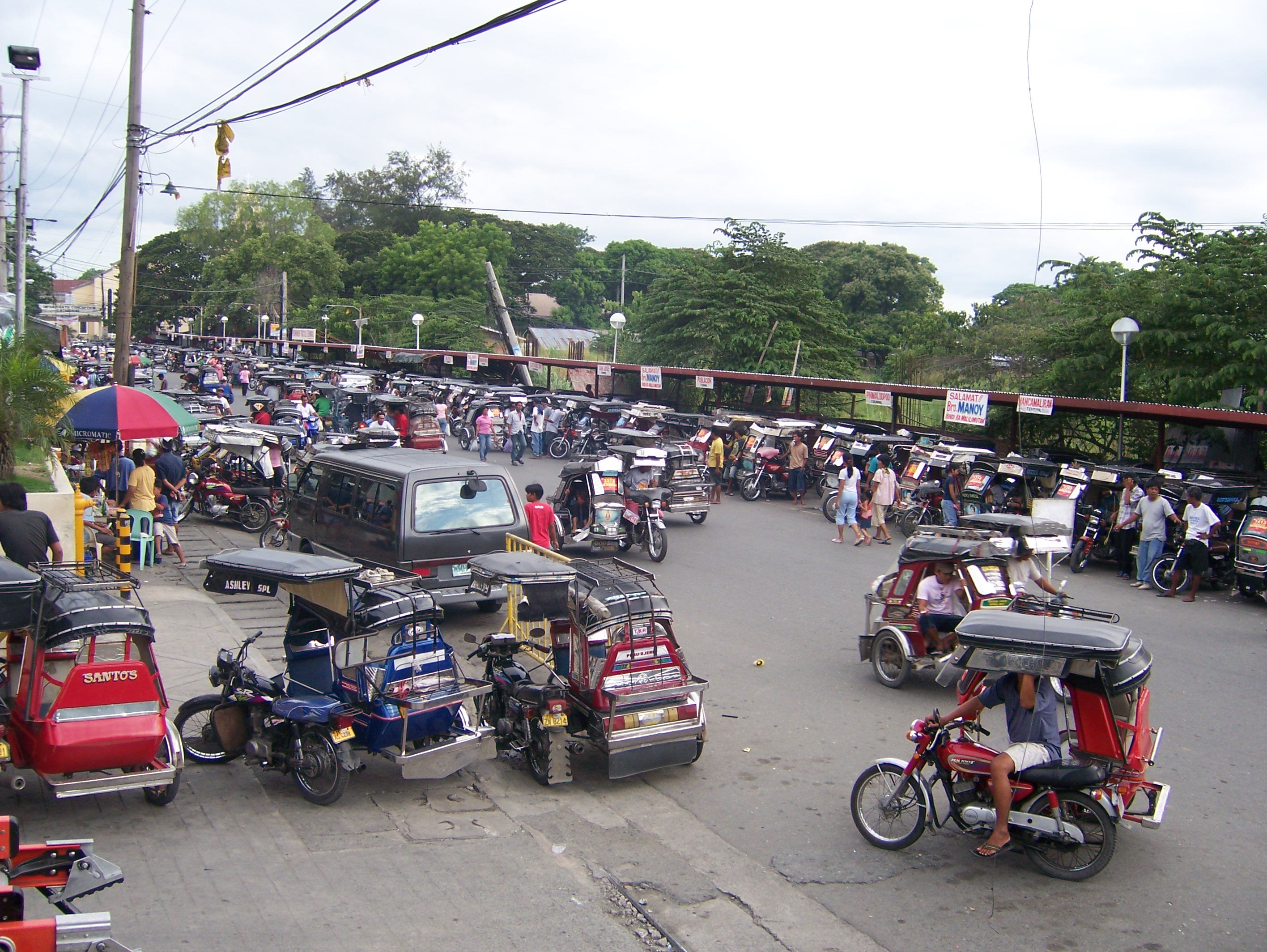
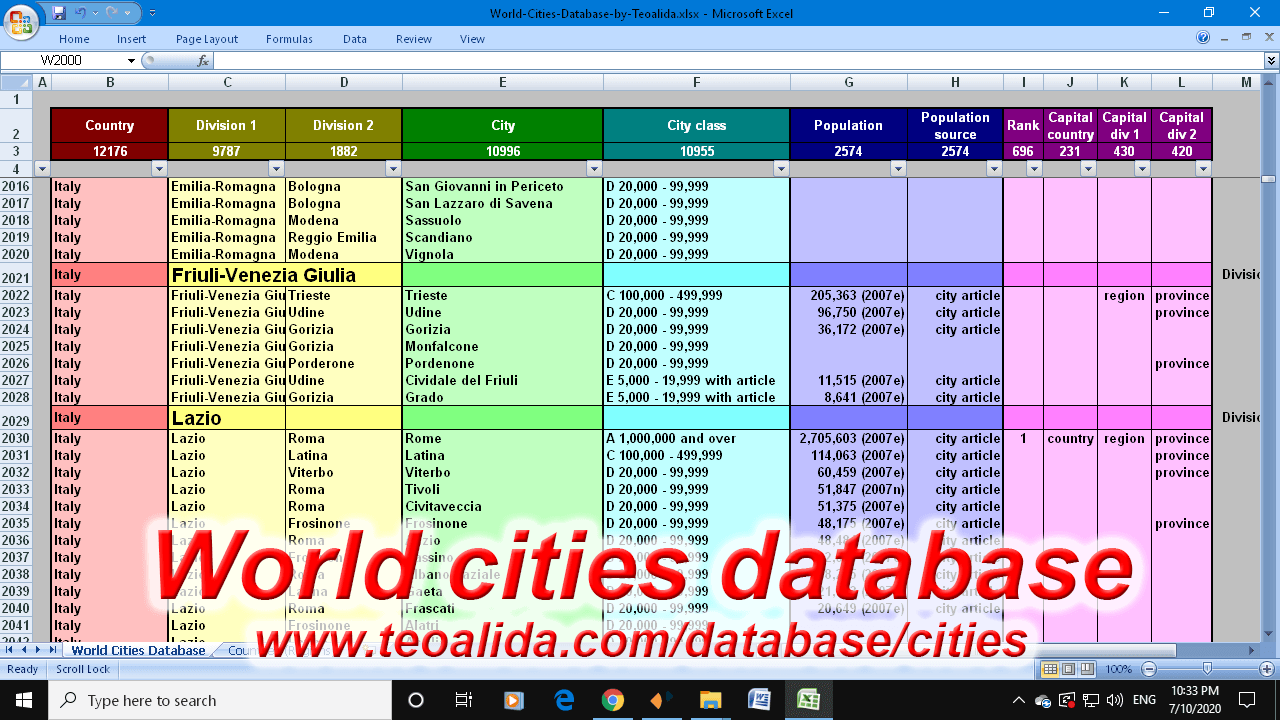

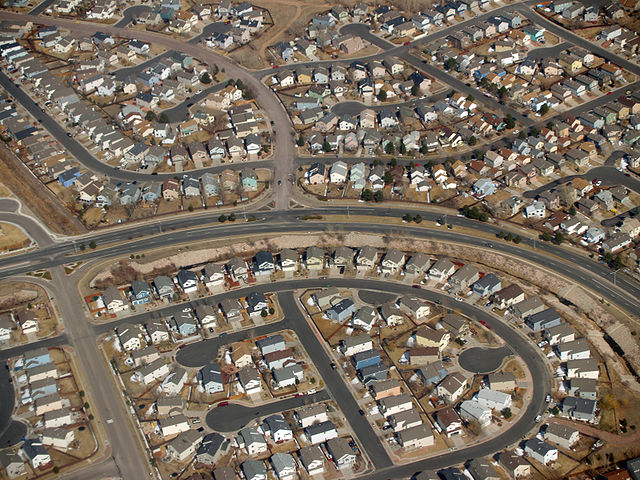
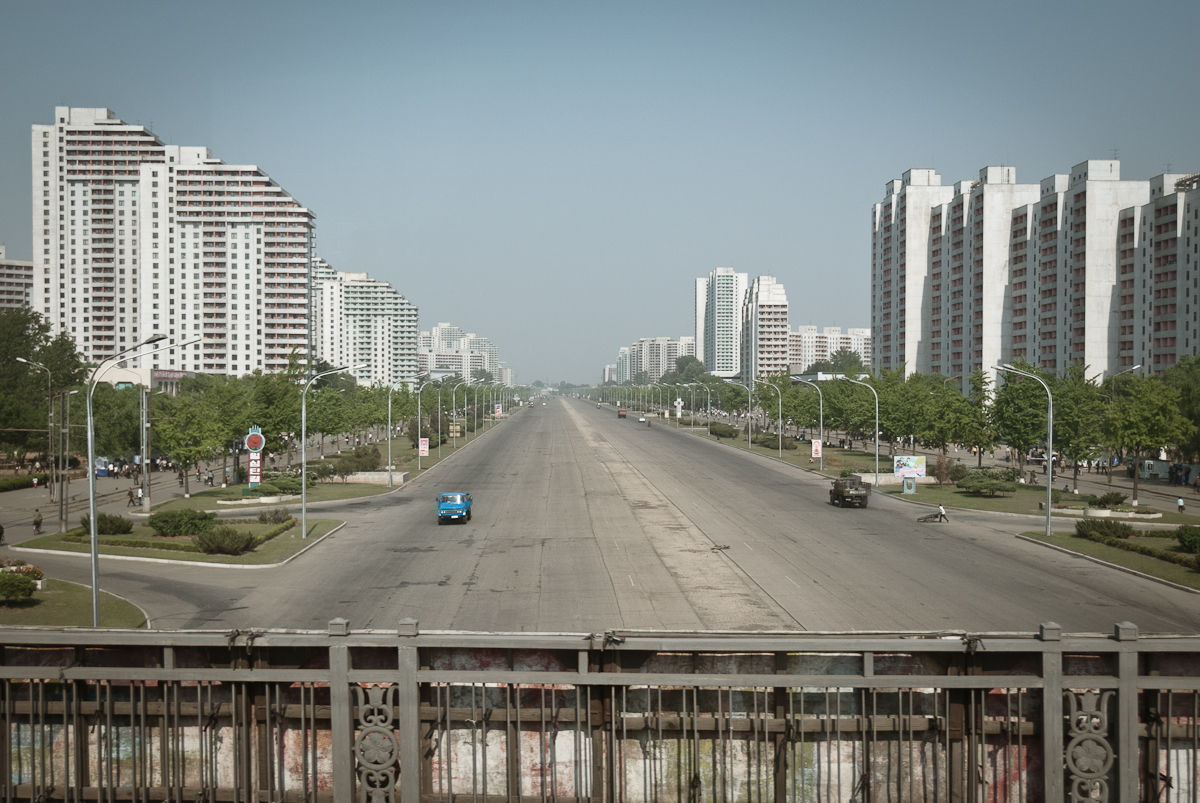
Hi,
Can you build an apartment building on a plot inside a subdivision or gated community?
Ask subdivision developer, some set own rules about what kind of buildings can be built and some don’t.
I can help provide insight on some of the questions written here.
– The biggest reason for the large amount of slums and densely designed houses is due to poor planning and infrastructure. If you want to earn an okay wage in the Philippines, it is almost necessary that you live within the Metro Manila area. Because of this, most Filipinos who live in the provincial areas leave in hopes of better opportunities in MM – even though they do not have a plan for residence upon arrival. This is why slums continue to be a thing, and why socialized housing in the PH fails to work: the government will build the socialized housing away from the Metro Manila area, which rids people access to work, so they leave it and return again to the slums of Manila. It also doesn’t help that these so-called “socialized housing projects” are criminally built – lack of access to electricity, running water, etc. There is just so many people in the Philippines that a lot have stopped caring about the poor. Majority of the Philippines belong to class C/D/E, and those living in the lower classes believe children to be their avenue of escaping poverty (“retirement plan”), and so they keep having more in hopes that one of them would be rich enough to pull them out of it. Its a vicious cycle of overpopulation and poverty.
– For those belonging to the middle class, the idea of living outside of Metro Manila is hampered by poor infrastructure, making access to work untenable (poor road layout and poor transportation options). Why not have work in the outskirts instead of everything being in MM? That has been a great point of frustration for many years. It has even garnered the capital city getting the moniker “Imperial Manila” due to all development seemingly being focused to the Metro Manila area.
– Why are houses poorly designed even in the outskirts? That’s just corporate greed and corruption at work. The smaller the house, the more residents can be crammed into the same area. The government doesn’t raise up a fuss with violations as long as they get their share. The Philippines being a third world nation also means that for a lot of people, these shoe-boxes are their only options in terms of owning their own property.
Other stuff:
– Bayanihan is done during the approach to rainy weather. Typhoons and storms are very common in the Philippines, and so flooding and flash floods are almost a given. Bayanihan is done to help relocate a house to temporary high ground, say if it was located by the seaside or by the river come rainy season. Its not meant to be a permanent endeavor, but sometimes it can be. Bayanihan serves as a symbol of community for Filipinos even until today: helping one another can accomplish amazing tasks together.
– Jeepneys do have their routes written on the side, signifying the coverage of their journey. Placards on the front dash also inform the passengers the exact “route” the Jeepney will take. In general, you will have to be knowledgeable of your chosen Jeepney’s route to know if it will pass by your destination or not (kind Jeepney drivers will help you out though and inform you if their jeep is passing by the correct route). Most Filipino commuters use the Jeep thanks to its affordability (starting from $0.20), and their tendency to let off passengers whereever you ask them to. However, this lack of drop-off areas is one of the reasons traffic is rampant all over Manila.
– Philippines is a popular expat destination due to a) affordable cost of living (American minimum wage will have you live like a king in majority of the nation), b) sights and destinations (beaches can be as close an hour away, and we are very proud of our white sandy beaches. I actually didn’t realize how good we have it until I was a bit better traveled), and c) unfortunately, there’s a big element of sexploitation going on. Desperate foreign men who want to have the “exotic” experience travel to the Philippines, in order to take advantage of desperate Filipina women who want to escape the life of poverty. This is not true for all foreign expats, however it is common enough to be a stereotype.
Overall, I loved the article as it tried to explain our architecture from the view of an outsider. I am not an architecture student, I just happened to pass by this website on random. I hope this helps in painting a better picture of our country’s landscape. It is a deeply flawed nation, but like the people who live in poorly designed homes, its home. So we make do.
the best resort i have ever visited in my life is Bali. if you don’t believe me, read this article: https://tripbirdie.com/bali-overwater-bungalows/. i think you will find enough reasons to visit this fun place.